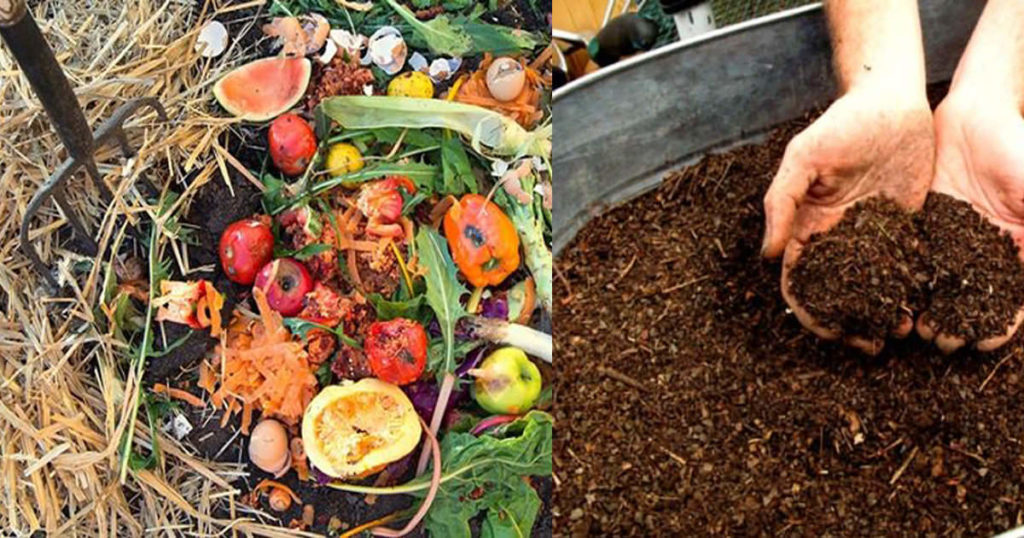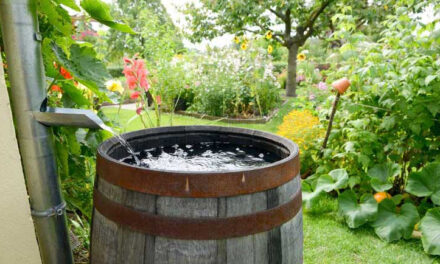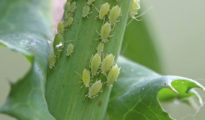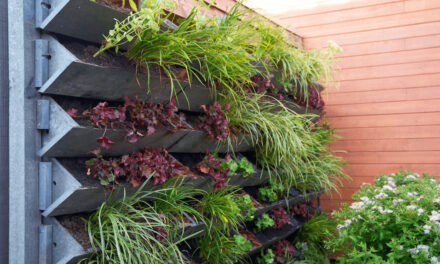Composting, a natural process, allows us to participate in the recycling of organic matter in a significant manner. Our kitchen scraps, which may seem like waste, can transform into nutrient-rich soil, contributing to the ecosystem and enriching our gardens. This article delves into the science behind composting, enlightening us about this fascinating and beneficial process.

Understanding Composting
Composting is the process by which organic matter decomposes in a controlled environment. It’s an age-old practice dating back to early agricultural societies that understood the importance of returning what we borrow from the earth. Despite its age-old roots, the science behind it remains as relevant as ever.
A successful compost pile is a bustling microcosm teeming with microorganisms like bacteria, fungi, actinomycetes, and other decomposers. These tiny organisms are the primary agents that break down the organic matter into its mineral components, making them accessible for plant uptake. They munch on your kitchen scraps, turning them into humus – a dark, crumbly, and fertile substance.
The Chemistry of Composting
Composting is a chemically driven process that revolves around carbon and nitrogen – the primary elements that constitute organic matter.
Carbon, an essential element of all life on earth, serves as an energy source for the microorganisms, while nitrogen is necessary for building proteins in their bodies. The optimal Carbon:Nitrogen (C:N) ratio for composting is about 30:1. Achieving this balance is key to promoting effective composting and minimizing odors.
Carbohydrates, such as cellulose and sugars present in organic waste, provide a rich carbon source, while materials like grass clippings and vegetable waste supply the much-needed nitrogen. If the compost pile is nitrogen-heavy, decomposition may become smelly and slow. In contrast, if it's carbon-heavy, the composting process might be slow due to insufficient nitrogen for microbial reproduction.
Role of Microorganisms
Once the compost pile is set with the right C:N ratio, the microbes get to work. These include bacteria (making up 80-90% of the microorganisms), actinomycetes, fungi, and protozoans. Each group breaks down different components of the waste, working together to ensure complete decomposition.
Bacteria, due to their vast numbers, initiate the process. They consume simple organic compounds like sugars and starches, causing the compost pile's temperature to rise. As the compost pile heats up, other thermophilic organisms, like actinomycetes and fungi, take over. These organisms can withstand higher temperatures and break down the more complex compounds such as proteins, fats, and cellulose.
The pile's heat is a crucial component of the composting process. It aids in the decomposition process and helps kill pathogens and weed seeds present in the compost pile. For optimal microbial activity, the compost pile should ideally reach temperatures of 130-160°F (54-71°C).
The Stages of Composting
The composting process can be broken down into three stages: the mesophilic phase, the thermophilic phase, and the maturation phase.
In the mesophilic phase, the pile begins to warm up, and mesophilic bacteria (those that thrive at moderate temperatures) start breaking down the readily available organic matter. This phase is short-lived, as the heat generated by the bacterial activity quickly makes the conditions unsuitable for these bacteria.
The thermophilic phase begins as the pile's temperature rises above 104°F (40°C). At this stage, thermophilic microorganisms dominate and break down the tougher organic material, such as cellulose and lignin. This phase can last from a few days to several months, depending on the compost's composition.
Finally, as the compost pile cools down, it enters the maturation phase or the curing phase. Mesophilic organisms return and continue the decomposition process. The humus is stabilized during this stage, and the end product is a rich, dark, crumbly compost ready for use in the garden.
Composting in Practice
To start composting, all you need is organic waste, a compost bin or a designated space in your garden, and a little patience. Layer your compost bin with brown materials (high in carbon) such as dried leaves, newspaper, or straw. Add a layer of green materials (high in nitrogen) such as vegetable peels, coffee grounds, or fresh grass clippings. Keep adding layers of brown and green materials to maintain the optimal C:N ratio.
Remember to turn the compost pile every few weeks using a pitchfork or a shovel. This step aerates the pile, supplying the aerobic bacteria with the oxygen they need for decomposition. A well-aerated pile will decompose faster and smell better.
The Benefits of Composting
Composting has numerous environmental and agricultural benefits. It recycles kitchen and yard waste, reducing the volume of garbage sent to landfills. It also enriches the soil by improving its structure, enhancing its nutrient content, and increasing its microbial activity. Moreover, compost acts as a natural soil conditioner and can help suppress plant diseases.
In conclusion, composting is a perfect example of nature's recycling system, turning waste into gold. By understanding the science behind composting, we can appreciate this natural process and use it to enhance our gardens, reduce our waste, and contribute to a healthier environment.
The Role of Oxygen and Water in Composting
Oxygen plays a crucial role in the composting process. Composting is primarily an aerobic process, which means it requires oxygen. The microorganisms that facilitate composting need oxygen to live and function. They use it to break down carbon, creating energy and producing carbon dioxide as a byproduct.
Without sufficient oxygen, the compost pile becomes anaerobic. Anaerobic conditions slow down the composting process and produce foul-smelling compounds such as hydrogen sulfide (the rotten egg smell). Turning the compost pile regularly introduces oxygen and keeps the process aerobic, efficient, and odor-free.
Just like oxygen, water is also vital for the composting process. Microorganisms need moisture to survive and function. An optimal moisture level is around 50-60%. The compost pile should feel like a wrung-out sponge – moist but not dripping. Too much water can fill up the air spaces needed for oxygen, turning the pile anaerobic, while too little water will slow down the decomposition process by limiting microbial activity.
Composting Methods
Several composting methods cater to different needs and constraints, but the underlying principles remain the same. Here are a few popular methods:
- Traditional composting or cold composting involves piling organic waste and waiting for nature to take its course. It requires less effort but takes longer, anywhere from 6 months to a year.
- Hot composting is a more active method where the compost pile is turned frequently to maintain high temperatures for faster decomposition. Hot composting can produce finished compost in 1 to 3 months.
- Vermicomposting utilizes worms, particularly red wigglers, to consume organic waste and excrete worm castings – a rich, fertile compost material. Vermicomposting is a good option for indoor composting or for people with limited outdoor space.
- Trench composting involves digging a hole or a trench in the garden and filling it with kitchen scraps. Over time, the organic waste decomposes directly into the soil.
The Wonderful World of Humus
The end product of composting, humus, is a boon to soil health. Humus is a stable, carbon-rich material that’s resistant to further decomposition. Its complex structure gives it a high water-holding capacity, which improves the soil's moisture retention.
Humus also improves soil structure. In sandy soils, it acts as a glue, binding the loose sand particles into larger aggregates to improve water retention. In clay soils, humus creates spaces for air and water to move, preventing the soil from becoming too compacted.
Moreover, humus acts as a reservoir of nutrients. It can hold onto nutrients and release them slowly over time, providing a steady supply to plants. This nutrient buffering capacity makes humus particularly valuable in gardening and farming.
The Environmental Impact of Composting
Finally, it's worth discussing the positive environmental impacts of composting.
- Reduced waste: Composting can significantly reduce the amount of household waste going into landfills.
- Lower greenhouse gas emissions: Organic waste in landfills often decomposes anaerobically, producing methane – a potent greenhouse gas. Composting, being an aerobic process, produces carbon dioxide, which is significantly less potent as a greenhouse gas than methane.
- Conservation of natural resources: By composting, we produce a natural, nutrient-rich soil amendment, reducing our dependence on synthetic fertilizers. This not only conserves natural resources but also prevents pollution from fertilizer runoff.
In the face of modern environmental challenges, these benefits are not small feats. As such, composting is more than a science; it's a solution, a way for us to contribute positively to our environment and our future.
The science of composting offers a unique insight into the circle of life, where nothing goes to waste. From our kitchen scraps to the soil in our gardens, the journey of organic matter is a fascinating one. Composting is an easy and effective way to participate in this cycle, reducing waste, enriching our soil, and ultimately nurturing the environment. So, let’s turn our waste into worth, and in the process, contribute our bit to a more sustainable world.



















